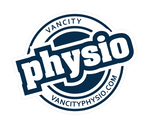Super sensitivity and muscle shortening cannot be operated on and ‘cut away,’ while ‘painkillers’ and other analgesic pills only mask the pain (often poorly) and promote toxicity, compounding the problem. Neuropathy only responds to a physical input of energy.
Intramuscular Stimulation (IMS) is a total system for the diagnosis and treatment of myofascial pain syndromes (chronic pain conditions that occur in the musculoskeletal system when there is no obvious sign of injury or inflammation). IMS is grounded in Western Medical Science, and has a solid foundation in its radiculopathy model of pain, which is now supported by many experts in the field. The treatment, which utilizes acupuncture needles because they are the thinnest implements available that are designed to penetrate deep within muscle tissue, specifically targets injured muscles that have contracted and become shortened from distress.
IMS relies heavily on a thorough physical examination of the patient by a competent practitioner, trained to recognize the physical signs of neuropathic pain. This physical examination is indispensable since chronic pain is often neurological as opposed to structural, and therefore, invisible to expensive X-rays, MRI Tests, Bone and CT Scans. Failure to recognize these signs will result in an inaccurate diagnosis, and thus, a poor starting point for physical therapy.
The treatment involves dry needling of affected areas of the body without injecting any substance. The needle sites can be at the epicenter of taut, tender muscle bands, or they can be near the spine where the nerve root may have become irritated and super sensitive. Penetration of a normal muscle is painless; however, a shortened, super sensitive muscle will ‘grasp’ the needle in what can be described as a cramping sensation. The result is threefold.
- Stretch receptors in the muscle are stimulated, producing a reflex relaxation (lengthening).
- Needle also causes a small injury that draws blood to the area, initiating the natural healing process.
- Treatment creates an electrical potential in the muscle to make the nerve function normally again. The needle used in IMS, by stimulating muscle spindles, essentially becomes a specific and unique tool for the diagnosis of Neuropathic Muscle Pain.
The goal of treatment is to release muscle shortening, which presses on and irritates the nerve. Super Sensitive areas can be desensitized, and the persistent pull of shortened muscles can be released. IMS is very effective for releasing shortened muscles under contracture, thereby causing mechanical pain from muscle pull. IMS, in effect, treats the underlying neuropathic condition that causes the pain. When competently performed, IMS has a remarkable success rate, as proven by the amelioration of symptoms and signs, even for chronic back pain with root signs.
Is it like acupuncture?
The short answer is no. It uses similar needles to acupuncture but the application is different. Gunn IMS Practitioners are trained to insert and immediately remove the needle to stimulate healing. Acupuncturists will leave needles at certain points in the body that are based on the Traditional Chinese Medicine theory of meridians.
Who is it for?
- People who have had no success with conventional treatments such as massage, stretching, or strengthening exercises
- Highly active individuals
- Those with long standing (chronic) injuries
- People who have tried all sorts of therapies with no luck reducing their pain
How does Gunn IMS differ from other forms of Dry Needling?
Gunn IMS practitioners have been trained to assess chronic pain and find its source which can come from irritated nerves near the spine or tender muscle bands. This technique is supported by clinical research and is taught through the University of British Columbia. Gunn IMS practitioners must meet certain requirements to learn this technique.
Does it hurt?
Some people report a pinch, which may be followed by the muscle “grasping” the needle. This will result in relaxation in the area of treatment.
Most people report some soreness, which goes away in 2-3 days. If you’ve had the injury for a while, it may bring up some of the original symptoms. This is often a good sign, as it points towards the site of treatment as the source of pain.
What should I expect afterwards?
You will notice an improvement in your range of motion, the ability to do actions you were not able to do before, and decreased pain and sensitivity. You may notice that muscles that were always tight will now respond better to stretching, strengthening and massaging.
It is important that within 48 hours of treatment, you do not massage, stretch, or lift anything heavy. You can walk for thirty minutes to an hour at a leisurely pace daily to stimulate healing!
Why does it work?
There are a couple reasons:
- Muscles have stretch receptors that are stimulated, causing lengthening of a tight muscle
- Needles increase blood flow to stimulate healing in the area
- Stimulating muscles will excite nerves causing it to function normally again
Book a consultation today: https://vancityphysio.janeapp.com/
Follow us on Instagram for more information: VanCity Physio (@vancityphysiotherapy)


